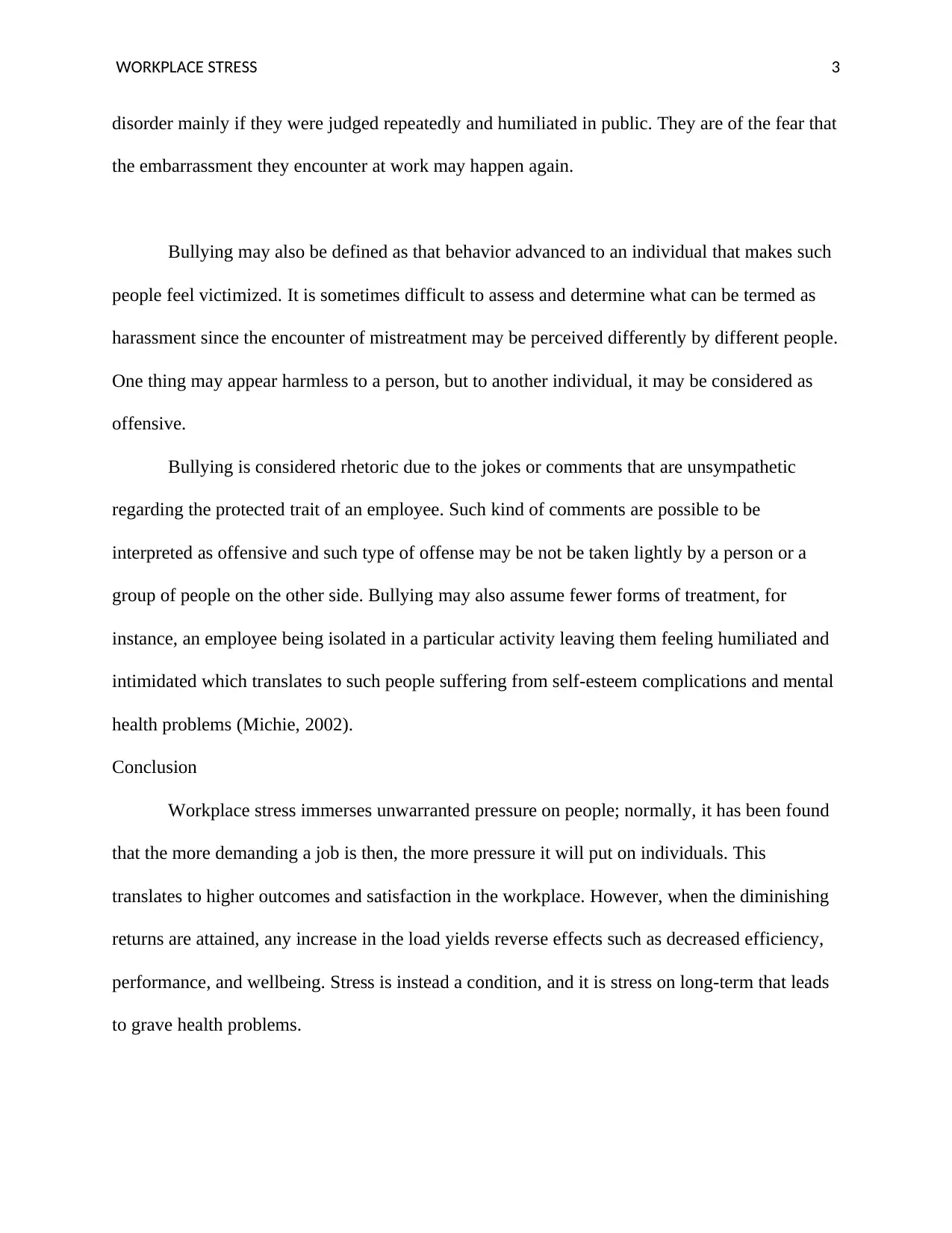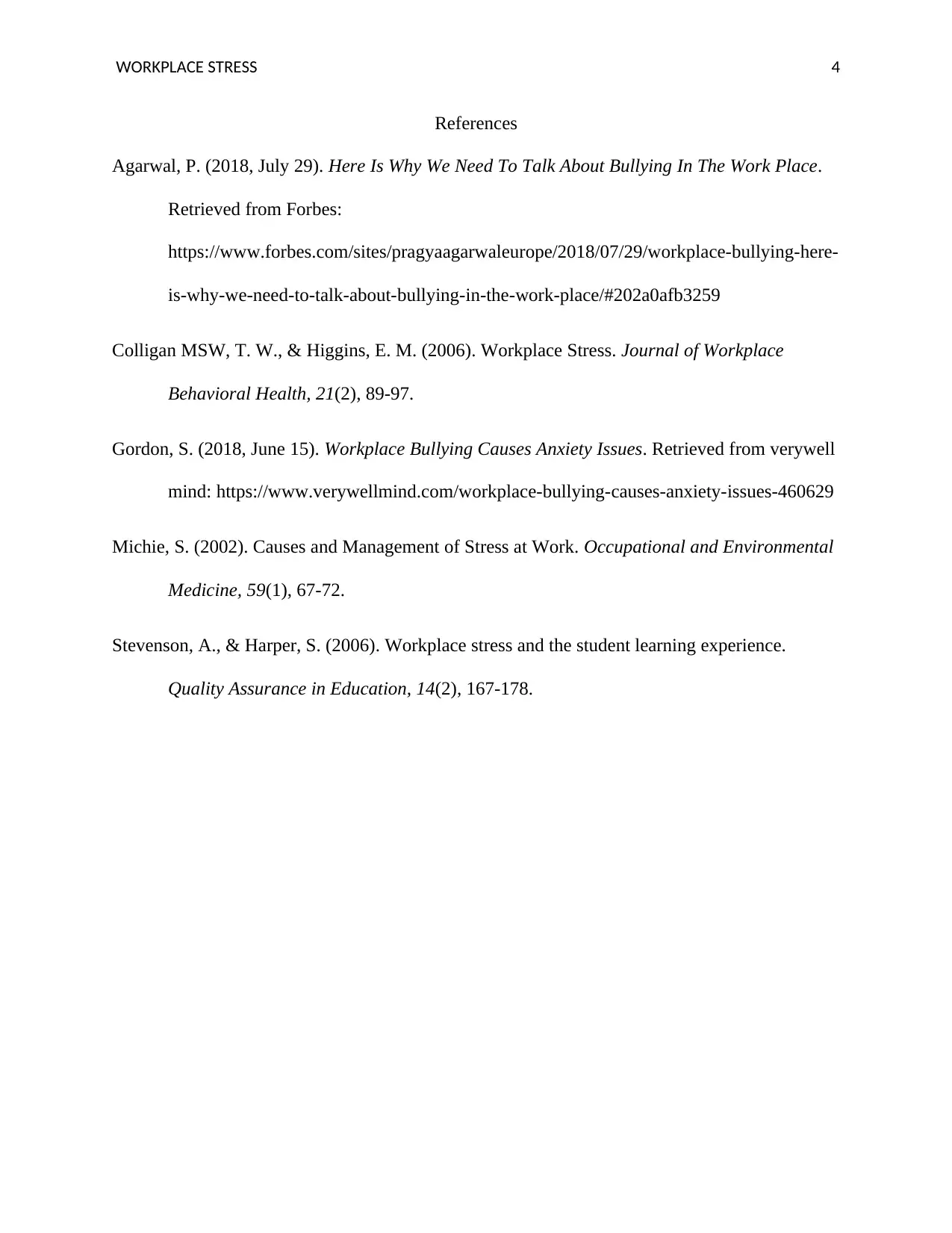Workplace Stress and Bullying: Effects on Employee Mental Health
VerifiedAdded on 2023/06/04
|4
|767
|128
Essay
AI Summary
This essay delves into the detrimental effects of workplace stress and bullying on employee mental health. It defines workplace stress and bullying, highlighting how bullying can lead to post-traumatic stress disorder (PTSD) and social anxiety disorder due to repeated humiliation and negative judgment. The essay emphasizes that bullying, whether through offensive comments or isolation, can significantly impact an individual's self-esteem and mental well-being. It concludes by noting that while some workplace pressure can be positive, excessive and prolonged stress results in decreased efficiency, performance, and overall health problems. The essay references various studies and articles to support its claims, underscoring the importance of addressing and managing workplace stress to prevent long-term health issues. Desklib provides a platform for students to access this and other solved assignments.
1 out of 4










![[object Object]](/_next/static/media/star-bottom.7253800d.svg)